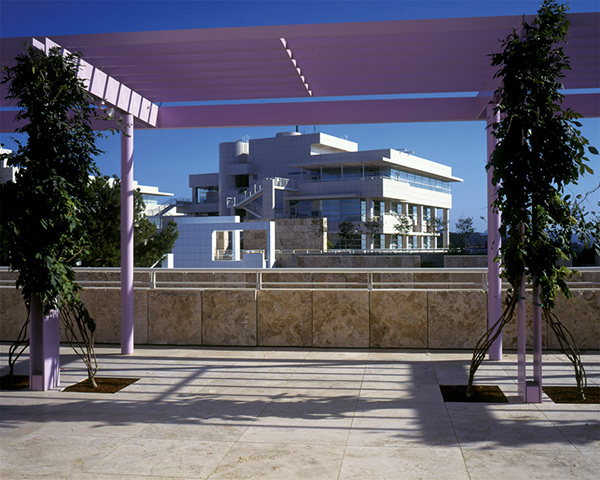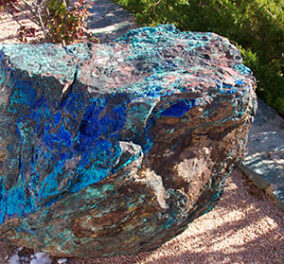
Scientist Beril Bicer-Simsir testing grouts in the Getty Conservation Institute’s laboratories.
Throughout 2013, the Getty community participated in a rotation-curation experiment using the Getty Iris, Twitter, and Facebook. Each week a new staff member took the helm of our social media to chat with you directly and share a passion for a specific topic—from museum education to Renaissance art to web development. Getty Voices concluded in February 2014.—Ed.
For over 25 years, the Getty Conservation Institute (GCI) has been advancing conservation practice in the visual arts. The GCI works on numerous projects and initiatives, conducts important research in its state-of-the-art laboratories, recruits an international and highly skilled staff, collaborates with partner institutions from all over the world, and is at the forefront of conservation science. Because our primary mission is to advance conservation practice for the professional conservation community, who we are as an institute, what kind of work we do, and how we do it is generally not visible to the public.
My name is Dave Carson and I’ve worked at the GCI for over 15 years. As laboratory manager, I oversee the day-to-day operations of the GCI’s four scientific laboratories, and as safety officer, ensure that safety regulations are followed. I’m also very involved in community outreach, and serve as the liaison between the professional community and university and high school students interested in conservation science. This week, I’ll be giving you a behind-the-scenes tour of the conservation science laboratories of the GCI, featuring some of its scientists, lab instruments, and projects.

The East Building at the Getty Center, home to the GCI labs and offices, seen across the plaza. Visitors often ask, “What goes on in there?”
Conservation science is a relatively new scientific discipline, and although the most well-known activity is authentication (determining who did, or didn’t, create a work of art), most conservations scientists’ work is related to researching art-historical or conservation-related questions. Because works of art can be made from almost any type of material, conservation scientists come from a variety of scientific backgrounds: biology, materials science, chemistry, physics, and engineering, to name just a few. And because works of art can come from almost any culture from any time in history, conservation science also draws from arts and humanities disciplines, such as art conservation, archaeology, and art history. At its core, conservation science is about helping preserve the world’s cultural heritage, so conservation scientists need to be familiar with the materials and methods used to create works of art. This requires an understanding of the properties of a wide range of materials and how they age, which is the basis for developing strategies to prevent or slow their deterioration.

A look at the diverse activities happening in the labs. From top left: Lynn Lee examining a sculpture from the Getty Museum’s collection, Andrew Lerwill looking at museum colorants, Marc Walton studying a pottery fragment, and Vincent Beltran testing monitors.
At the GCI, staff from diverse backgrounds work in project teams to address unsolved conservation problems with significance beyond a particular object or site, with a view to finding solutions that are sustainable in the long run. For example, some of our main areas of research include:
- developing new ways to analyze works of art without having to remove samples to determine their material compositions,
- testing the response of materials to newly developed conservation treatments, and
- studying the effects of environmental conditions on objects, collections, and sites.
In the MOSAIKON project, for example, an international team is working to develop new procedures and materials for the conservation of ancient floor mosaics. The team is testing the suitability of different kinds of binding materials for reassembling individual pieces of mosaics (tesserae) that have already been removed from their original archeological sites. One conservation procedure we are trying in this project is re-burying previously excavated mosaics to protect them for the future, and monitoring environmental conditions such as humidity and temperature to insure their stability.
Conservation science is a small field, and major equipment manufacturers do not produce scientific instruments specific to conservation needs. So instead, conservation scientists take advantage of existing technology by adapting equipment to fit the needs of the field. The GCI is at the forefront of this practice and develops instruments, technology, and methods for the greater professional world.




Comments on this post are now closed.